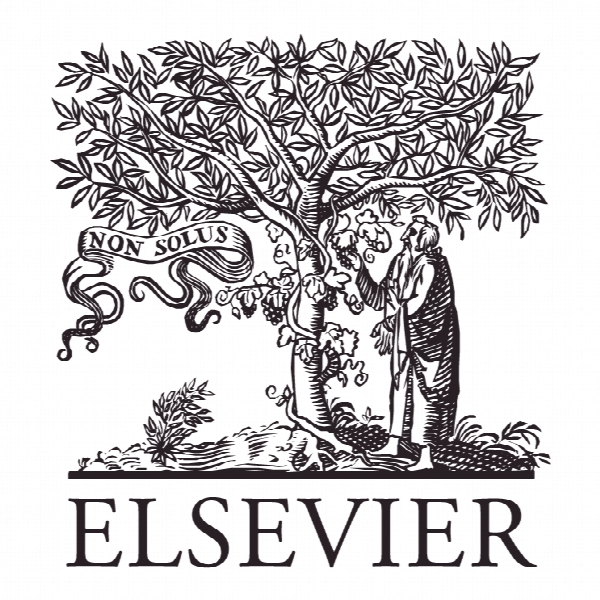پیاده سازی یک مکانیزم نهان نگاری امن بر اساس رمزنگاری و تطبیق زوج های بیت On the implementation of a secured watermarking mechanism based on cryptography and bit pairs matching
- نوع فایل : کتاب
- زبان : انگلیسی
- ناشر : Elsevier
- چاپ و سال / کشور: 2018
توضیحات
رشته های مرتبط مهندسی کامپیوتر
گرایش های مرتبط امنیت اطلاعات، مهندسی نرم افزار
مجله دانشگاه شاه سعود – کامپیوتر و علوم اطلاعاتی – Journal of King Saud University – Computer and Information Sciences
دانشگاه Department of ETCE – Jadavpur University – Kolkata – India
شناسه دیجیتال – doi https://doi.org/10.1016/j.jksuci.2018.04.006
منتشر شده در نشریه الزویر
کلمات کلیدی انگلیسی Watermarking, Cryptography, Least significant bit, Bit pairs similarity, Matching
گرایش های مرتبط امنیت اطلاعات، مهندسی نرم افزار
مجله دانشگاه شاه سعود – کامپیوتر و علوم اطلاعاتی – Journal of King Saud University – Computer and Information Sciences
دانشگاه Department of ETCE – Jadavpur University – Kolkata – India
شناسه دیجیتال – doi https://doi.org/10.1016/j.jksuci.2018.04.006
منتشر شده در نشریه الزویر
کلمات کلیدی انگلیسی Watermarking, Cryptography, Least significant bit, Bit pairs similarity, Matching
Description
1. Introduction For copyright protection of multimedia information, a variety of digital watermarking techniques have been developed, which are used to protect the multimedia information from being abused. There are two categories of techniques of embedding the watermark for copyright shield in any multimedia information, be it the image, audio or video. The spatial domain technique follows any particular algorithm for embedding of the watermark by directly adding it to the data, and the frequency domain method is to embed it in any of the transform domain. The spatial domain of watermarking is faster but fails in robustness while the frequency domain watermarking is robust but still consumes more resources in terms of power consumption and slower speed of computing (Acken, 1998; Low et al., 1998; Macq and Pitas, 1998; Swanson et al., 1998). It is better to go for the higher cost of computing to get the benefits of robustness of the watermark when maliciously attacked by the mechanisms of noise, filtering or compression. For the realization of the watermarking mechanisms, the major areas of focus are imperceptibility, robustness, capacity, security, and trustworthiness. The perceptual transparency of the hidden data or information is the imperceptibility. Survival of the watermark information against intentional or unintentional attacks without significant degradation of the quality of the original image is the robustness. The payload for the new signal is defined as the capacity and the undetectability of the watermark information on the corresponding media, which is defined as the security and all these turned to be very important considerations in case of invisible watermarking (Liu and Tan, 2002; Zhu et al., 2006; Gutab and Ghouti, 2007). A well-known survey of watermarking techniques can be found from (Kutter and Hartung, 1999; Mohanty, 1999; Altaibi et al., 2015). There is a trade-off between these parameters as an increase in robustness may appear at the expense of enhanced watermark signals visibility as well as reduced bandwidth. But, the perceptual distortion of the image, due to watermark embedding is not related directly to the magnitude of the watermark signal. It can be observed that the watermark signal of same strength is causing less visual distortion in busy areas of the image than the flat background. In the papers (Podilchuk and Wenjua, 1998; Hannigan et al., 2001) on watermarking, there is less effort to evaluate images in order to consider the upper limit of the power of the watermark signal without considerable visual distortion. These spatial domain methods neglect the significance of payload capacity and mostly focused on the imperceptibility factors. In Khan and Gutub (2007) the authors proposed an image based message concealment mechanism by use of punctuation marks to encode a secret message and by using modified scytale cipher provides the better result as far as the security is concerned. In Al-Otaibi (2014) the author proposed a data hiding technique with two layers of the security system by including AES cryptography followed by image-based steganography to ensure high security. Methods of LSB matching is proposed in Sharp (2001), which also called ± embedding mechanism (Li et al., 2011). In this method, the cover image pixel value is increased or decreased randomly by one when the secret bit is not equal to the LSB of the pixel belonging to the cover image (Huang et al., 2014). The LSBM modifies both the histogram of an image and the correlation between the adjacent pixels, which helps the steganalysis methods to attack this method (Xia et al., 2016). In Sabeti et al. (2013) the authors proposed complexity based LSB matching scheme, where the LSB matching is used in order to enhance the security against possible attacks. This mechanism uses a local neighborhood analysis to determine the secure locations of an image and then LSB matching used for the embedding process. In Parvez and Gutub (2011) the authors proposed one image steganography algorithm, which determines the number of secret message bits that each pixel of the cover image can store based on a partition scheme of color intensity range. This scheme provides high data hiding capacity and security for the host image.


